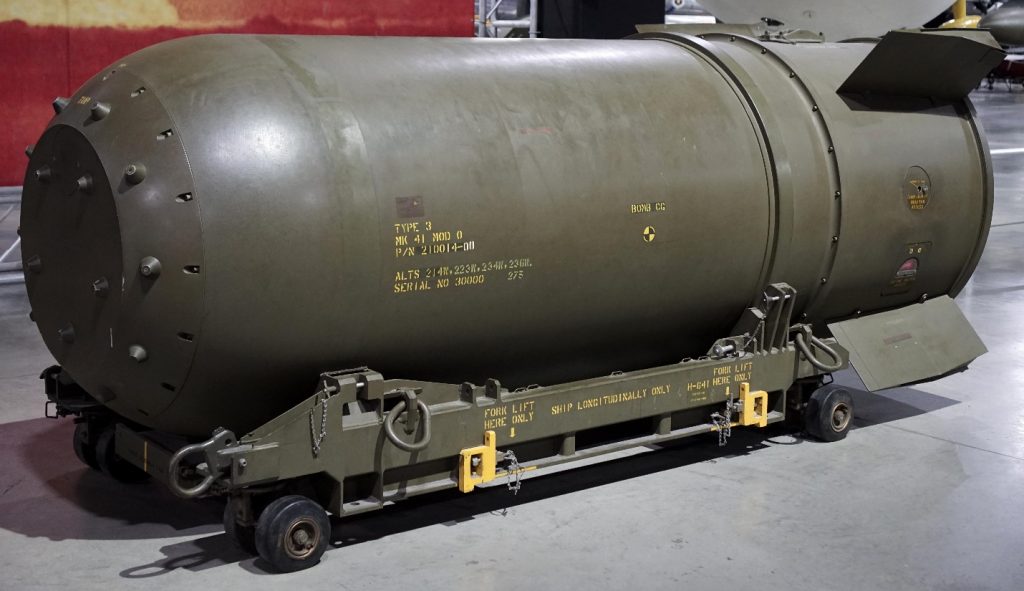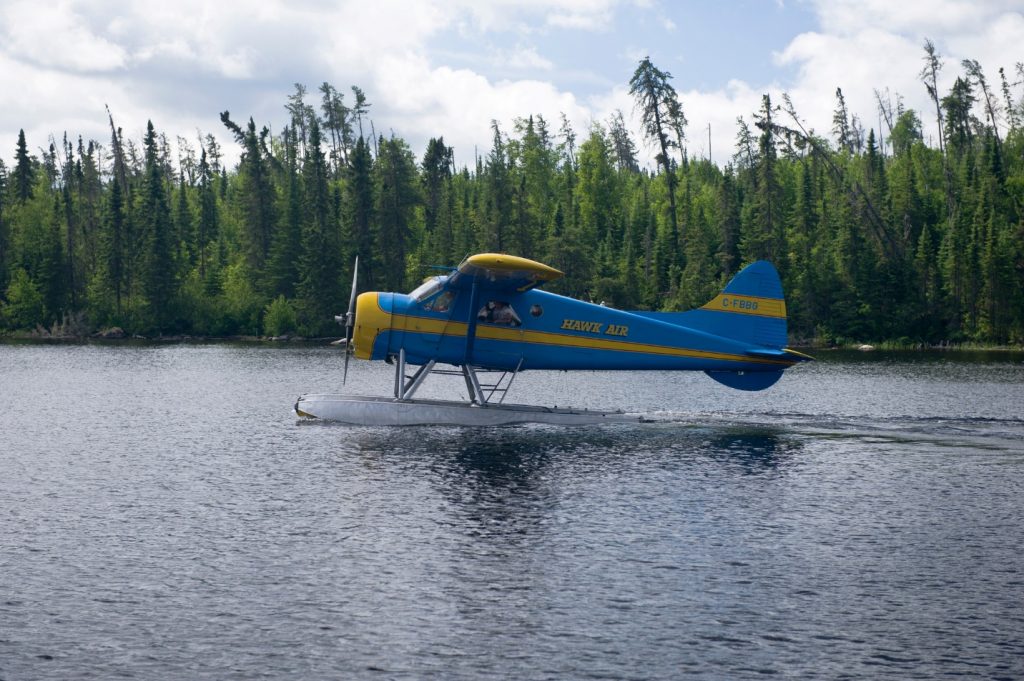The Semipalatinsk Nuclear Testing Site:

The Soviet Union used the 7,000 square mile Semipalatinsk Nuclear Test Site in Kazakhstan to conduct 456 nuclear tests between 1949 and 1989. Also known as the “Polygon”, the site is located on the steppe in northeast Kazakhstan. Government indifference exposed the local population to high levels of nuclear fallout for 40 years, causing permanent health problems in a majority of the local people, with genetic mutations being passed on to subsequent generations. In 1991, the site was permanently closed, but a lot of fissile material was left behind, including plutonium, making it a serious security threat as the unguarded and unsecured site became a prime target for scavengers and terrorists looking for bomb grade material.
The AN 602 Thermonuclear Weapon:

The official designation of the world’s biggest bomb was RDS-220, also known as the Tsar Bomba. There were many code names assigned to the bomb, the one most people are familiar with is AN602. The CIA designated the bomb as “JOE 111”. The bomb is a three-stage design, originally conceived to yield 100 Megatons of explosive force, about 3,000 times the power of the bombs dropped on Hiroshima and Nagasaki. Concerns over fallout and the safety of the release plane’s crew, who could not escape such a massive explosion, lead to a reduction in explosive force to about 54 Megatons, which is 10 times the explosive force of all conventional explosives used in the Second World War, and about one quarter of the force released by the eruption of Krakatoa in 1883. The Soviet Union tested the bomb on October 30, 1961 on Severny Island. The bomb itself was a monster, weighing in at 27 tons, with a length of 26 feet and a diameter of almost 7 feet. As impressive as those dimensions are, they pale when compared to the power of the bomb. The fireball of the explosion was 5 miles in diameter, and even 62 miles from ground zero, a person could suffer 3rd degree burns. Windows broke 560 miles away, including in Finland and Norway. The fireball was visible from 620 miles away and almost reached the same altitude as the release plane. The mushroom cloud rose to 42 miles, above the stratosphere and into the mesosphere, about 7 times the height of Mount Everest. At its peak, the top of the mushroom cloud was 59 miles wide with a base of 25 miles. It was the largest and loudest man-made explosion in history. The U.S. and many other countries condemned the test, but the point was made: the Soviet Union was carrying the biggest stick.
The B-41 Thermonuclear Weapon:

The United States had only one three-stage hydrogen bomb in its arsenal, the B-41, aka Mark-41, thermonuclear weapon. It was the most powerful bomb the U.S. ever made, capable of a 25 Megaton yield. Deployed from 1961 until 1963, the bomb was eventually phased out completely by 1976. It was succeeded by the less powerful B-53 bomb. The B-41 was about 12 feet in length, 4 feet in diameter and weighed 10,670 pounds. The only aircraft that carried it were the Boeing B-47 Stratojet and the Boeing B-52 Stratofortress. It could be deployed in various ways, from free-fall to parachute drop, and it could be set to detonate in an airburst, a ground burst or as a laydown. Five hundred B-41 bombs were produced between 1960 and 1962. Although no full yield versions were ever tested, in theory the B-41 was the most efficient nuclear weapon of its time, its weight to yield ratio surpassing even the giant AN602.
The Village of Shishmaref in Alaska:

Only about 650 people are estimated to be living in the village of Shishmaref, a small settlement on Sarichef Island in the Chuckchi Sea. It’s a traditional Iñupiaq (Native Alaskan) village, with most people living a subsistence lifestyle, depending mainly on hunting and gathering for food. The native art work, carvings of whalebone and walrus tusks, is sought after in art galleries all over the United States. Frequently called “the friendliest village in Alaska”, the people of Shishmaref have a reputation for being congenial hosts to visitors. Shishmaref faces serious environmental problems that threaten its future. The effects of world-wide climate change are considered the most dramatic in the small village. With sea ice diminishing there is less protection from storm surges, and the melting permafrost has not only made the shore line more susceptible to erosion, but weakened the foundations of the houses in the village. In 2016 the village voted to relocate to the mainland, but so far that has not happened, leaving the future of Shishmaref in a state of uncertainty.
The deHavilland Beaver:

In 1948, the deHavilland Company of Canada introduced the DHC-2 Beaver STOL (Short Take Off and Landing) utility aircraft, and a legend was born. The Beaver was an immediate success and was adopted as a light utility aircraft not only by military forces around the world, but by land management organizations, expedition teams and, especially, by bush pilots, who value the plane’s ruggedness and performance. “Plane & Pilot” magazine called it “arguably the best bush plane ever built”. The high wing aircraft can be equipped with straight or amphibious floats, skis or large Tundra tires, making it truly adaptable to any environment. 1,657 Beavers were built before production ended in 1967, but that was hardly the end. Today, the Beaver is still one of the most popular planes with bush pilots, and the tough aircraft, with its classic “round” 450 hp Pratt & Whitney R-985 Junior radial engine, can be found ferrying cargo and passengers all over the planet to some of the most remote places on Earth.

A Hydrogen Bomb Explosion:
Image of a hydrogen bomb explosion at Mururoa atoll, French Polynesia, Pacific Ocean. Beauty and ugliness creating a perverse, unnatural union.





 Users Today : 11
Users Today : 11 Users Yesterday : 188
Users Yesterday : 188 This Month : 393
This Month : 393 Views Today : 110
Views Today : 110 Total views : 527085
Total views : 527085 Who's Online : 1
Who's Online : 1
Recent Comments